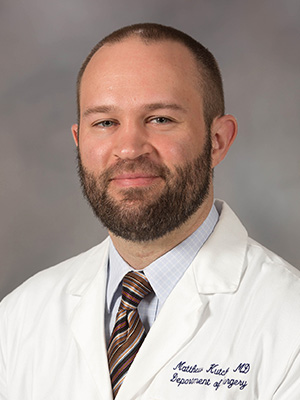Departmental trauma update
An update from Dr. Trey Wofford, ED medical director, and Assistant Professor:
Sims et al. studied the use of vasopressin use in hemorrhagic shock. (PMID: 31461138). The goal of this study was to determine if the use of low dose vasopressin use in patients with hemorrhagic shock decreases the need for transfused blood products. The conclusion of their study states that vasopressin does reduce blood product requirements.
They suggest that the benefit of vasopressin is likely related to its pro-platelet function in this setting. So, it is important to recognize that blood product resuscitation is the key to treating hemorrhagic shock; vasopressin is just an adjunct.
That said, many of our ED and trauma attendings have adopted the practice of giving a bolus and then infusion of vasopressin in patients who show signs of traumatic shock and need blood product resuscitation. The typical dose is a 4U bolus followed by a 0.04U/min infusion.
Recommendation: consider using vasopressin in conjunction with standard measures in trauma patients who require blood transfusion due to hemorrhagic shock.
Brill et al’s article (PMID: 35290259) on incorporating whole blood into hemorrhagic shock resuscitation is one of several recent and ongoing studies looking at the use of whole blood in trauma patients. They designed a prospective observational cohort study of patients receiving emergency release blood products. The whole blood (WB) group received any units of whole blood and the component group received only fractionated blood (red blood cells, plasma, platelets.) The aim of the study was to investigate the survival benefit of whole blood. Their conclusion was that whole blood transfusion is associated with improved survival and also decreased overall blood utilization.
Torres et al. studied the use of whole blood along with standard massive transfusion protocols (component based) in severe hemorrhage trauma patients. (PMID: 36652255). This was a retrospective cohort study using the ACS TQIP (American College of Surgeons Trauma Quality Improvement Program) database. The question was whether whole blood in conjunction with massive transfusion protocol was better than massive transfusion protocol alone. Inclusion criteria were adult trauma patients with systolic BP less than 90mmHg and shock index > 1 who received at least 4 units of red blood cells within the first hour of ED arrival at level 1 and 2 US and Canadian trauma centers. Burns, those who died within an hour, and interfacility transfers were excluded. Primary outcome was survival at 24 hours and 30 days.
They concluded that whole blood massive transfusion protocol was associated with improved survival. It should be noted that there are a number of pretty important confounding factors affecting the results of this study. However, the authors suggest that this study is an essential step in prioritizing whole blood use in trauma patients with severe hemorrhage.

Finally, UMMC is involved in the LITES network's Type O Whole Blood and Assessment of Age during Prehospital Resuscitation (TOWAR) Trial, which is a prehospital study investigating the usefulness of whole blood. Led by Dr. Matt Kutcher, Assistant Professor and trauma surgeon at UMMC, enrollment is underway at UMMC. In partnership with AirCare, UMMC has enrolled six patients to date. We anticipate enrollment continuing for the next three and a half years. We are excited to be a part of this cutting-edge research.
Recommendation: Be on the lookout for further studies which may well result in a paradigm shift towards the use of whole blood in trauma resuscitation.


